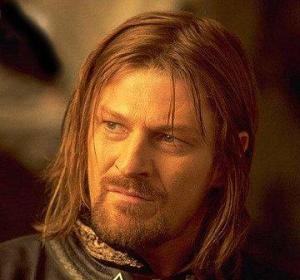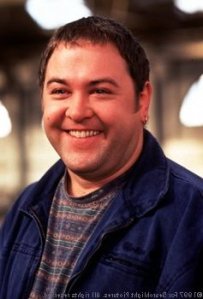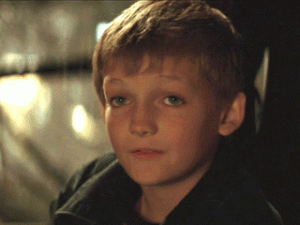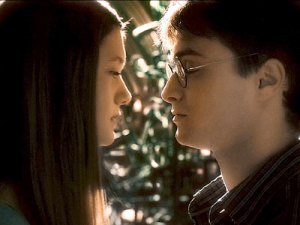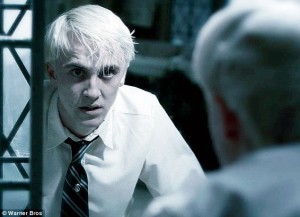To begin, I would like to tell you how I feel about a trend in gaming that has gained a certain spot in most action games; the Quick-Time Event (QTE). As a player of many action games, I have grown accustomed to the QTE, for better or for worse. For those of you not sure if you can recognize a Quick-Time Event, here is a handy guide: Does your game include cut scenes? Can you use these cut scenes as pee-breaks from your mega long sessions of gaming, or are you required to sit there and watch them because there is a button press (or sequence of presses) that you must complete in order to successfully conclude the cut scene? If this is the case, you have experienced the QTE. Quick-Time Events have become the bane of most action gamers’ experiences, since it becomes a lazy way of making you stay connected to the television when most people would tune out. For a better explanation of the evils of QTE, see many, many of the reviews on Ben Croshaw’s Zero Punctuation site, he has a humorous and accurate portrayal of the QTE.
Resident Evil 4, regarded almost universally as the best in the series, and without a doubt one of the top 10 action games (if not top 10 of any genre) of the last decade uses QTEs. The same can be said for the God of War series. My use of these two specific examples is mainly to serve one purpose; to show you, the reader the 2 examples of QTEs in games that I can remember liking. Until this past weekend, at least.
Heavy Rain, an “Interactive Drama” according to developer Quantic Dream, follows in the footsteps of an incredibly ambitious but ultimately failing project called Indigo Prophecy (or Fahrenheit if you live outside the US). Indigo Prophecy placed you in the role of a number of characters, one a murderer who is being possessed by some manner of evil, as well as the 2 detectives trying to arrest this murderer. The story unfolds while you switch between these people; covering your tracks as the killer, and trying to dig up those very tracks as the detectives. The interesting thing about it, and why it ultimately disappointed, was its reliance on the use of the right analog stick to control your actions, and how the whole game seemed to be one big QTE. For some reason I was unable to figure out, Indigo Prophecy didn’t do it for me, but I saw the huge potential it had, which is why I was very excited for Heavy Rain.
Right away, Heavy Rain became a must play for me, the graphics alone sold me on it. The more details that were released, the better it sounded. But the control system still bothered me. How does one control a game where you must hold a button to walk, and interact with your environment not with the buttons on the controller but with the right analog stick? Let me put your mind to rest, the learning curve of Heavy Rain was well worth the effort.
You take the place of 4 characters, a father named Ethan, a private detective names Scott Shelby, investigating the case of the Origami Killer, an FBI agent Normal Jayden, who uses a sweet pair of sunglasses and a glove to investigate crime scenes in a seemingly virtual world (and whose GUI would put Tom Cruise’s Minority Report computer to shame), and a photographer, Madison, who plays an unknown role until later in the story. The story involves the Origami Killer, a man who has killed 8 victims, all by drowning them in rainwater and leaving their bodies in a wasteland area with an origami figure in one hand and an orchid on their chest. Without giving out any more spoilers than I already have, it become immediately apparent that Heavy Rain is going to be (for lack of a better word) heavy. Play the first scene (roughly an hour) without any emotion, and you aren’t human. You start as Ethan, waking up, showering, shaving, brushing your teeth, looking around your kid’s room and juggling if you like. You have a button solely for showing your characters thoughts and desires. if you get stuck, see what you are thinking and it will help you get moving.
You realize while playing that you are just seeing a tutorial level, but by god it is the best and most useful tutorial level in any game I have played. You may find it silly to waste time brushing your teeth or shaving in a game, but once you get into the meat of the game you will certainly be thankful that those actions were given to you to try out the innovative control scheme. Example 1 of the innovation in Heavy Rain: After choosing to take a shower as Ethan, select the shower, push the right stick up and remove your shirt, then push it down to remove your boxers. You get in, make a half circle motion to turn on the water, another to turn it off, and then you shake the entire controller up and down to dry your hair, and shake it side to side to dry your back. Does this seem to be too much? Yes, on paper. But in game, it become second nature. Want to turn on your car? Make a half circle with the right stick to turn the key. Driving your car? Tilt the controller right and left to steer. But all of this is done in the form of Quick-Time Events. Do yourself a favor, before playing Heavy Rain, get very familiar with your Dual Shock 3, or plaster a diagram under your TV so you can participate in the action of the game without looking away.
Example of innovation in Heavy Rain #2: The story is an actual branching story, with important choices to be made. The tagline of the game is “How far would you go to save someone you love?”. This is important to the overall tone of the game in ways I would be amiss to explain to you. Suffice it to say, there is a free-form ability to make choices in Heavy Rain, and the game does NOTHING to quantify or qualify your choices as correct or incorrect. They are just choices. You make them, you live with the consequences. I will admit, there were times that I was completely shocked by how I responded to choices in the game, and felt instantly remorseful or excited, not because the game told me to, but it was a natural human emotion to a stressful situation. A benign example of these choices is in the very beginning, as Ethan. He has a choice to watch TV and listen to music while doing yard work until his wife and children get home. or you he can do some work (he is an architect, and you draw an entire concept drawing if you choose this option). Either way, the story progresses, and you may never know the consequence of the other choice, unless you play again and make it. A final point that struck me about the story was the finality of your choices. If one of your characters died, the game will carry on without them. An amazing idea to be sure, it is just one more example of how must flexibility there is in the story, and the way it is told.
I would like to make a couple of gripe though. The game save almost every time you make a choice. While this is a great feature so that you don’t lose progress due to the game crashing or an emergency of some sort causing you to flee the game, it also left you unable to save the game in multiple slots. There was no manual save option, so if you were caught making a choice you didn’t like, you were stuck, there is no reloading last checkpoint in this game. The story, however amazingly detailed and immersive it is, has a couple of gaping plot-holes, big enough to cheapen the reveal just a little bit. The replay value is there, as there are multiple endings, and there are infinite combinations of choices that can be made, you will always know who did it. Its like watching The Sixth Sense again, you always know Bruce Willis is dead.
There is something to be said for being able to control a story as completely as you can in Heavy Rain. It is amazingly well written, animated, and acted. It is a tightly paced piece of art, and it will make you think. It is exceptional in its ability to show what games can be, if taken as art and if someone is willing to take a risk. It is not without its faults, though, as venture into such uncharted territory is, but for the most part they are easy to look over, and don’t harm the overall experience as much as they could have. It’s gritty, it’s scary, it’s unlike anything before it (Indigo Prophecy included). It won’t be for everyone, it won’t set the gaming world on fire, but it is worth a play specifically to see what possibilities are present in Interact Drama. Play it, tell me about your experience, tell me how it turned out for you, and I will do the same. Be warned, you will feel awful for your choices in this game, you will have a very difficult time discerning wrong from right, and you will question how or why you could have done what you did. But savor that experience. It may never come again in games, and if this is the first and last game of its kind, then so be it. At least it happened once, and it was important. Not just as a game, but as a work of art. Heavy Rain is almost perfect, it gets a 5/5 from me.




























